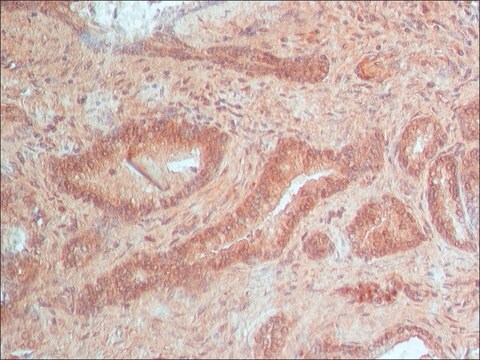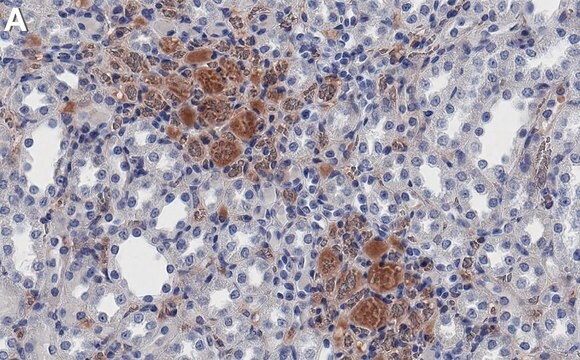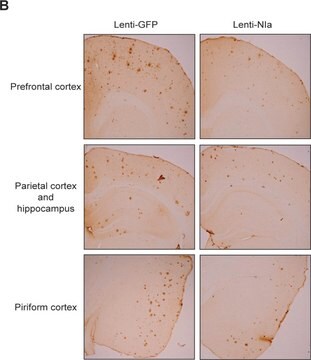05-939
Anti-LSD1/BHC110 Antibody
ascites fluid, Upstate®
Synonym(s):
BRAF35-HDAC complex protein BHC110, FAD-binding protein BRAF35-HDAC complex, 110 kDa subunit, Flavin-containing amine oxidase domain-containing protein 2, amine oxidase (flavin containing) domain 2, lysine (K)-specific demethylase 1, lysine-specific hist
About This Item
Recommended Products
biological source
mouse
Quality Level
antibody form
ascites fluid
antibody product type
primary antibodies
clone
monoclonal
species reactivity
mouse, human
manufacturer/tradename
Upstate®
technique(s)
ChIP: suitable
immunofluorescence: suitable
immunohistochemistry: suitable
immunoprecipitation (IP): suitable
western blot: suitable
NCBI accession no.
UniProt accession no.
shipped in
wet ice
target post-translational modification
unmodified
Gene Information
human ... KDM1A(23028)
General description
Specificity
Immunogen
Application
This antibody has been reported by an independent laboratory to immunoprecipitate LSD1 from chromatin.
Immunoprecipitation:
Recommended.
Immunohistochemistry:
This antibody has been reported by an independent laboratory to detect LSD1 using paraffin-embedded tissues. (Metzger, E., 2005)
Immunofluorescence:
Recommended.
Epigenetics & Nuclear Function
Histones
Chromatin Biology
Quality
Western Blot Analysis:
1:500-1:2000 dilution of this lot detected LSD1 in RIPA lysates from HeLa cells.
Target description
Linkage
Physical form
Storage and Stability
Handling Recommendations:
Upon first thaw, and prior to removing the cap, centrifuge the vial and gently mix the solution. Aliquot into microcentrifuge tubes and store at -20°C. Avoid repeated freeze/thaw cycles, which may damage IgG and affect product performance. Note: Variabillity in freezer temperatures below -20°C may cause glycerol containing solutions to become frozen during storage.
Analysis Note
HeLa cell lysate.
Other Notes
Legal Information
Disclaimer
Not finding the right product?
Try our Product Selector Tool.
Storage Class Code
10 - Combustible liquids
WGK
WGK 1
Regulatory Listings
Regulatory Listings are mainly provided for chemical products. Only limited information can be provided here for non-chemical products. No entry means none of the components are listed. It is the user’s obligation to ensure the safe and legal use of the product.
JAN Code
05-939:
Certificates of Analysis (COA)
Search for Certificates of Analysis (COA) by entering the products Lot/Batch Number. Lot and Batch Numbers can be found on a product’s label following the words ‘Lot’ or ‘Batch’.
Already Own This Product?
Find documentation for the products that you have recently purchased in the Document Library.
Our team of scientists has experience in all areas of research including Life Science, Material Science, Chemical Synthesis, Chromatography, Analytical and many others.
Contact Technical Service





